It is probably hard to find a person who does not know such a flower as marigolds. This bright plant can be seen everywhere - in squares and parks, in gardens and near houses, on loggias and balconies, it pleases with its magnificent flowering until the onset of winter frosts.
Marigolds (Tagétes) are fragrant perennials and annuals that are distinguished by their bright color and long flowering. The petals of these flowers, collected in double inflorescences or simple, and can be of different shades - brick red to light lemon... The height of the bushes also differs - from "dwarf", which are no more than 12-16 cm, to "giant", which grow up to 2 meters in height. Due to this species diversity, this flower is actively used in the design of house and garden plots.
Content
Varieties of marigolds: photo and description
Today, there are about 60 varieties of marigolds, most of which grow in South and Central America. Plants differ in the shape of petals and leaves, color and structure, the size of the inflorescences. As a rule, velvet flowers are distinguished by a recognizable and bright aroma, but today hybrids have already been bred that do not have a strongly pronounced aroma, for example, the Gold Dollar variety.
On the continent of Eurasia, the most such varieties have gained great popularity, as:
- Tagetes tenuifolia or Tagetes thin-leaved;
- Tagetes patula L. or Marigolds rejected;
- Tagetes erecta L. or Erect marigolds.
Among these varieties, there are both annual and perennial flowers of various shapes and heights.
Varieties of low-growing marigolds
All varieties of this type are traditionally used to decorate lawns, flower beds, paths. They are also great as balcony flowers and for decorating flower arrangements in pots. Among the low marigolds, you can find both perennials and annuals.
Perennial marigolds
It is necessary to separately mention about perennial varieties of marigolds... Most gardeners think that velvet is an annual flower. But some species can reproduce by self-seeding. The flower does not need to be dug up, the plant itself will throw off the seeds and in the spring they will sprout into healthy and full-fledged bushes. Perennial marigolds can be seen in our region not so often, these include the following low-growing species, such as:
- Carmen;
- Orangeflamme;
- Bonanza.
Any perennial plants are good because summer residents do not need to sow seeds and grow seedlings annually. If you want to avoid unnecessary trouble, then you need to pay attention to perennial plants, for example, the following varieties.
Bonanza variety
Refers to the variety of rejected tagetes. The color of flowers of this species can be any - from bright yellow to variegated orange-red. The bushes are small, grow only up to 20-35 cm. The flower is double, medium-sized, the size of the inflorescence is up to 7 cm. Flowering occurs about 3 months after planting the seeds, and lasts until the first frost. The Bonanza variety includes a large number of varieties:
- Harmony;
- Bolero;
- Flame;
- Orange.
Carmen
Just like Bonanza, it is a species of rejected marigolds. As the flower grows, it forms a small bush up to 35 cm in size. The petals are clove-shaped, lush flowers in brown-orange color with a pronounced yellow color in the middle. The size of each flower, as a rule, is no more than 7-8 cm.
Hybrids and annuals. Photo and description
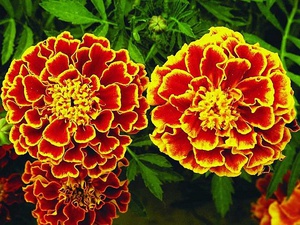 Almost every year, new hybrids and varieties of annual marigolds are created, therefore this flower will never bore you, constantly striking with its new shape and colors. Here are some of the most common varieties among low annuals.
Almost every year, new hybrids and varieties of annual marigolds are created, therefore this flower will never bore you, constantly striking with its new shape and colors. Here are some of the most common varieties among low annuals.
Mandarin
As the name implies, this type of marigold is characterized by a bright tangerine color. Flowers are carnation, double, 7-8 cm in size. They are a variety of rejected marigolds. Creates a spherical and dense shrub up to 30 cm in size.
Petite orange
This flower forms into small bushes (up to 30 cm) with abundant foliage. Terry buds are bright red, up to 7 cm in diameter.
Red gem
Globular flowers, which grow no more than 35 cm in length, are distinguished by a pinnately dissected leaf shape and thin stems. The inflorescence is small and simple - up to 3 cm in diameter. Color - burgundy red, in the middle of a splash of yellow. It blooms quite extensively.
Antigua
It is a variety of upright marigolds. It forms small bushes up to 30 cm high. The flowers are quite large, can reach about 20 cm in girth. As a rule, no more than 5-6 inflorescences appear on the bush. The color is solid, you can find marigolds of orange, golden, yellow shades.
Eyes of the Tiger
These marigolds do not exceed 35 cm in size. The flower has an average size of approximately 6-7 cm in circumference. The color is quite bright, usually orange, the center of the flower is often darker than the edges.
Kilimanjaro
The inflorescences are beautiful pure white in color, which form dense double flowers. The size of the flowers in the circle is average - about 6-7 cm.The size of the bushes is about 35 cm.
Varieties of tall marigolds
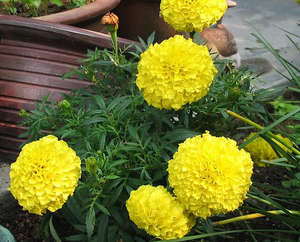 Tall species of these flowers look great in multi-level flower beds, in which flowers of various heights are planted. They can be planted in the middle of a circular flower bed, along the walls of a house or along a fence. These beautiful flowers will delight the eye with their continuous and abundant flowering from May until the first frost. Among the "giant" marigolds, such varieties are very popular with flower growers.
Tall species of these flowers look great in multi-level flower beds, in which flowers of various heights are planted. They can be planted in the middle of a circular flower bed, along the walls of a house or along a fence. These beautiful flowers will delight the eye with their continuous and abundant flowering from May until the first frost. Among the "giant" marigolds, such varieties are very popular with flower growers.
Hawaii
Strongly branched flowers up to 90 cm in size. It has carnation flowers, double and dense inflorescences, usually orange or yellow. The size in the circumference of one inflorescence can reach up to 18 cm.
Lemon Queen
Quite tall plants, which reach a height of 150 cm. The buds are carnation, the size of an individual inflorescence reaches 10 cm. The color is usually lemon yellow.
Smiles
The size of this plant is no more than 90 cm. This variety is distinguished by the original color of the petals, which combine yellow, orange and golden colors. The flowers themselves are small, carnation-shaped, no more than 9 cm in size.
Glitters
Marigolds reach a size of about 120 cm. It has a fairly abundant flowering. Chrysanthemum-flowered buds, small in size - about 7 cm. Petals are yellow-golden.
Mary Helen
These flowers form a dense bush up to 1 meter in size. The buds are quite large - up to 12 cm in circumference, have a carnation-like appearance. Inflorescences are beautiful lemon color.
To decorate your home garden, you don't need to dwell on one type of marigold. Experiment, plant different varieties and types, and then your flower garden will sparkle with the brightest colors.
Features of caring for marigolds
Most flower growers opt for marigolds, since this plant is completely unpretentious in care - it grows quickly, sprouts well, is rarely susceptible to diseases, and does not need to create a special microclimate. But the cultivation of these flowers has a certain specificity, which we will discuss below.
Planting seeds
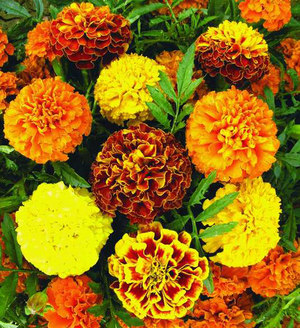 Most often, seed producers are advised to plant marigolds in mid-spring, deepening them by about a few centimeters. Planting raw materials may not be soaked before this, but it is still advisable to do this by wrapping the seeds in a damp bag or cloth.The sprouts will sprout in about one week.
Most often, seed producers are advised to plant marigolds in mid-spring, deepening them by about a few centimeters. Planting raw materials may not be soaked before this, but it is still advisable to do this by wrapping the seeds in a damp bag or cloth.The sprouts will sprout in about one week.
Marigold seeds are planted in fertile and light soil. If you are making the soil yourself, you can prepare the following mixture:
- 1 part peat;
- 1 part of humus;
- 0.5 parts of sand;
- 1 part turf.
The soil is necessary treat with manganese solution or a fungicide for disinfection. Also, ready-made store flower soil is suitable for sowing.
The water in the boxes for marigold seedlings should not stagnate, that is, you need to make a drainage drain at the bottom of the container (if it is not there) and put a small stone on the bottom.
Seeds are planted at a distance of 1.6-2.1 cm between themselves, making small grooves for this. Top covered with a small layer of soil. A week after sowing, the first shoots will pass. In addition to the above method, seeds can be sown directly into the ground. This should be done in early June, when the ground has warmed up well. It should be borne in mind that plants sown in the ground will bloom much later, in contrast to marigolds, which are planted in seedlings.
Light and ground requirements
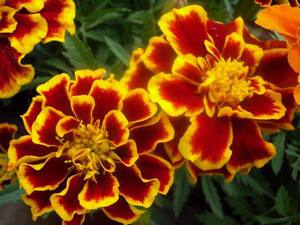 Marigolds are planted in open ground after all spring frosts are over. These flowers are quite sensitive to low temperatures, therefore, it is advisable not to rush with planting, and wait until the soil warms up well.
Marigolds are planted in open ground after all spring frosts are over. These flowers are quite sensitive to low temperatures, therefore, it is advisable not to rush with planting, and wait until the soil warms up well.
This plant requires good nutritious soil, suitable neutral and loamy. If the soil is sandy, then you need to make it more dense by adding humus or black soil.
These plants bloom most magnificently under bright sunlight, therefore it is advisable to choose a bright and open place for planting them, or a slight partial shade. When planting, it is necessary to take into account the variety of marigolds: tall ones are planted at a distance of approximately 45 cm, medium - about 35 cm, undersized - at a distance of 10-18 cm.
During growth, seedlings need good watering. But, when flowering occurs, watering must be limited so that the root system of flowers does not rot. If the soil is nutritious enough, then the flowers may not be fed. If the soil on the flower garden is not fertile enough, then you need to add bait several times during the growing season.
Marigold care consists in loosening the soil, weeding and timely watering... If you want to get a good flowering of the planted plants, be sure to remove the faded buds.
Pests and diseases
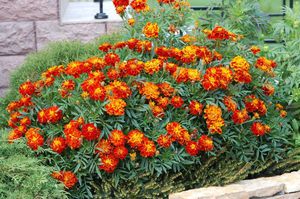 These plants are very resistant to various kinds of pests and diseases. Sometimes gray rot appears on marigolds. In this case, the infected bush must be removed so that this disease does not spread to healthy plants. In hot weather, spider mites can form on marigolds. These pests can be neutralized with the help of chemicals, or using folk methods - infusions of bitter pepper or onions.
These plants are very resistant to various kinds of pests and diseases. Sometimes gray rot appears on marigolds. In this case, the infected bush must be removed so that this disease does not spread to healthy plants. In hot weather, spider mites can form on marigolds. These pests can be neutralized with the help of chemicals, or using folk methods - infusions of bitter pepper or onions.
As you already understood from the article, marigolds are versatile flowers that can be suitable both for interior design of a room and for decorating adjoining and garden areas. For cultivation, which does not require much effort and time from you.
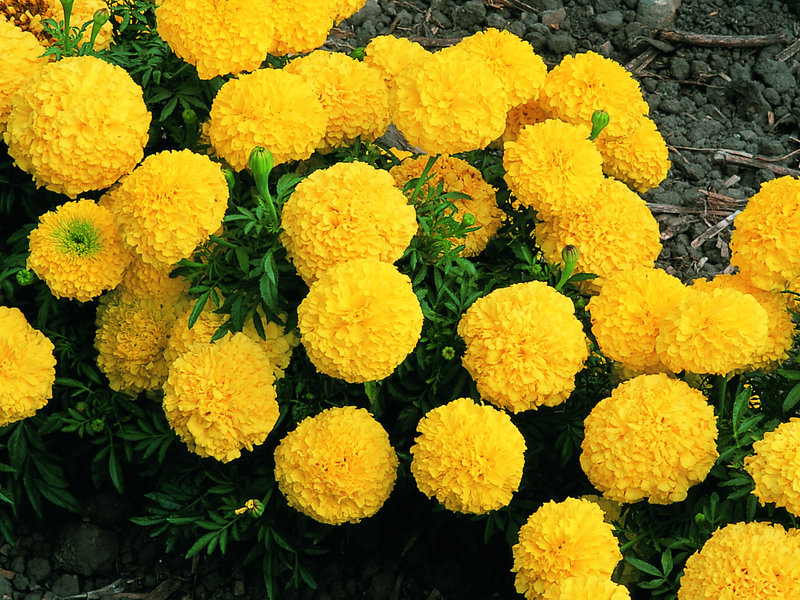

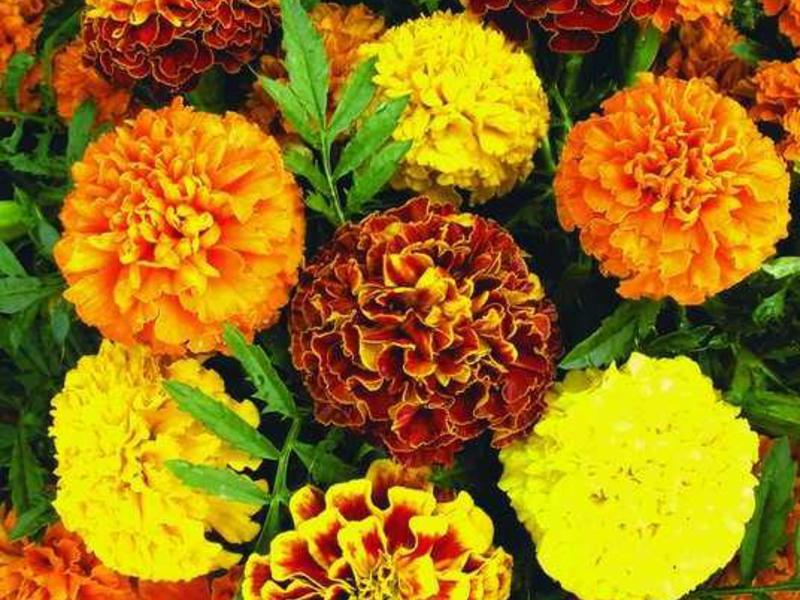
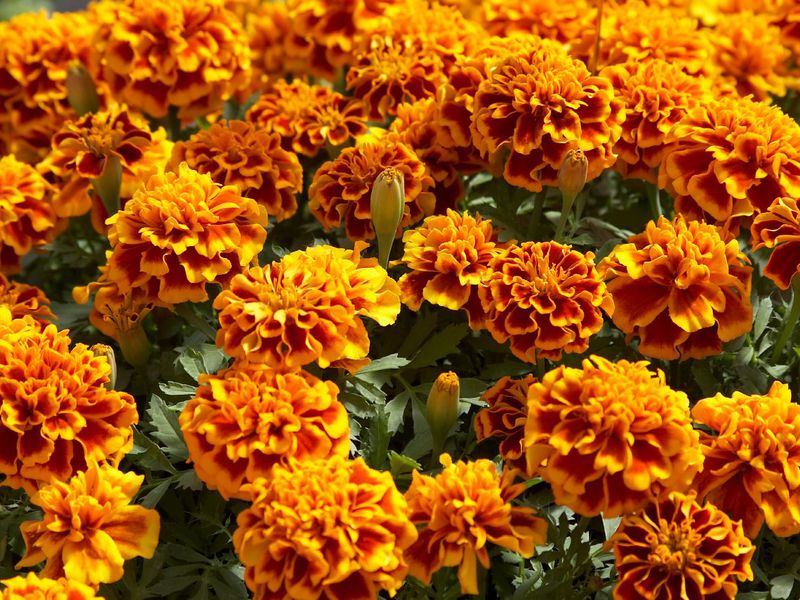
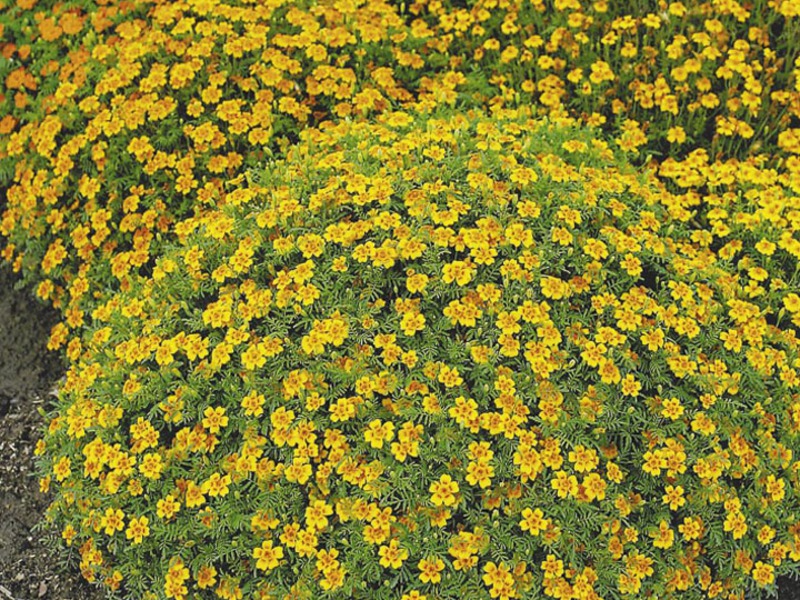

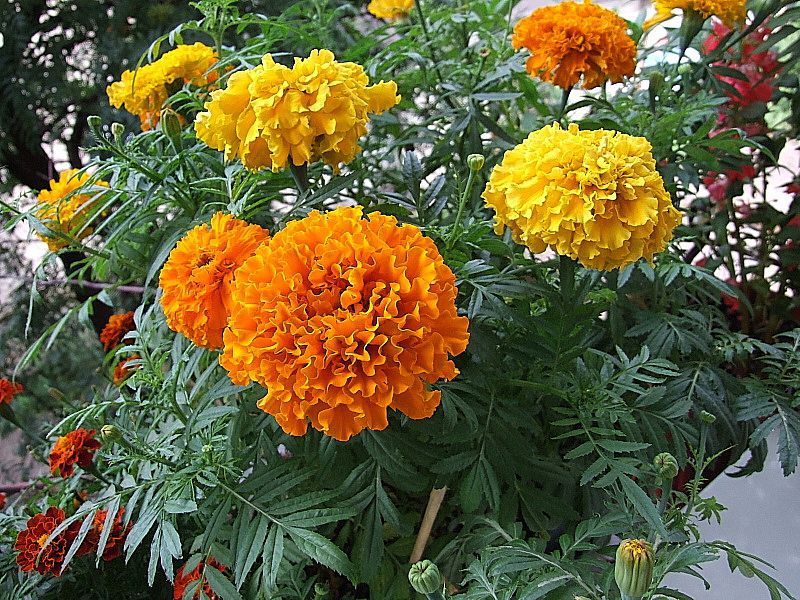
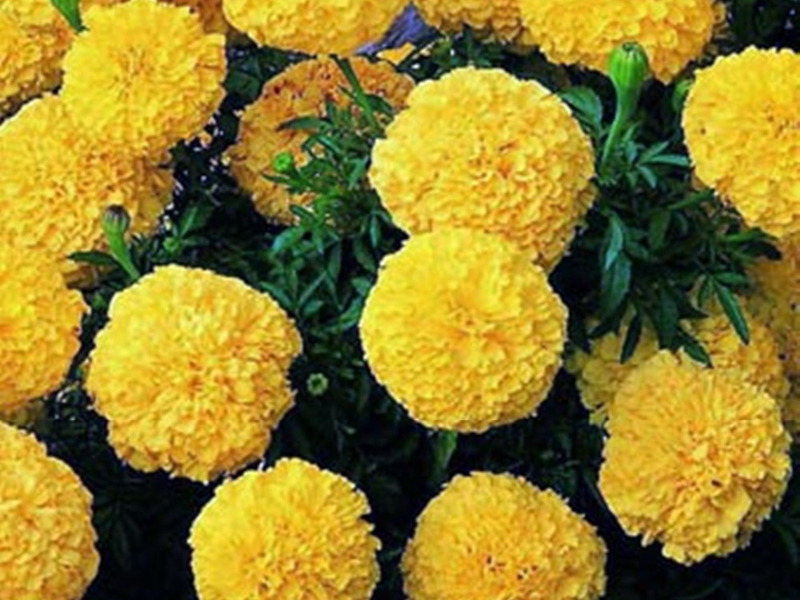
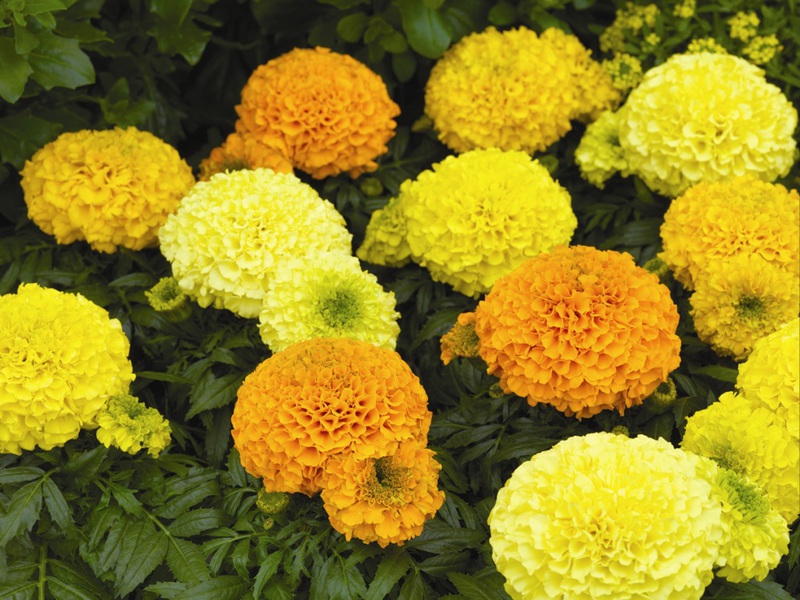

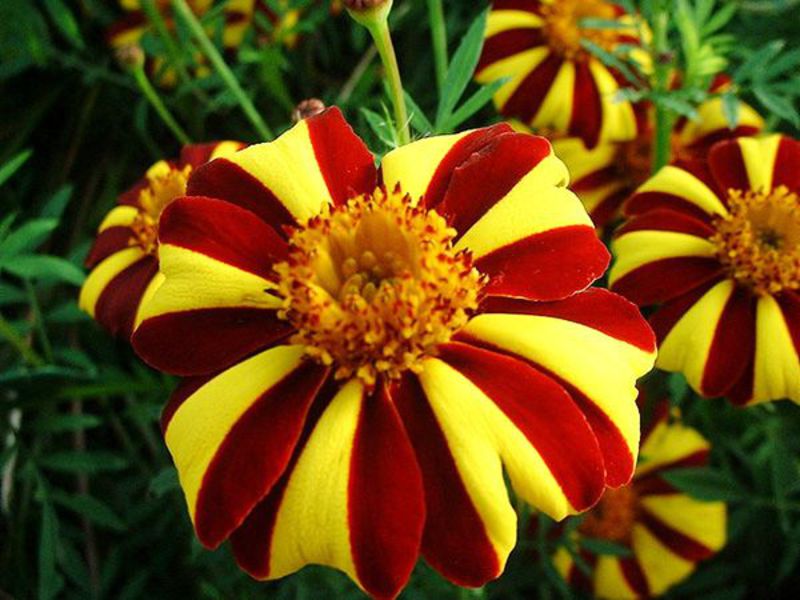
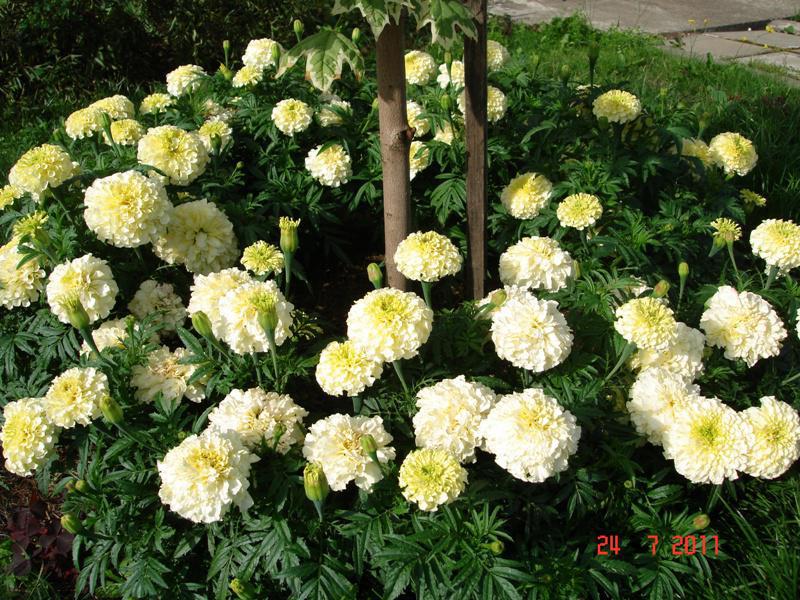
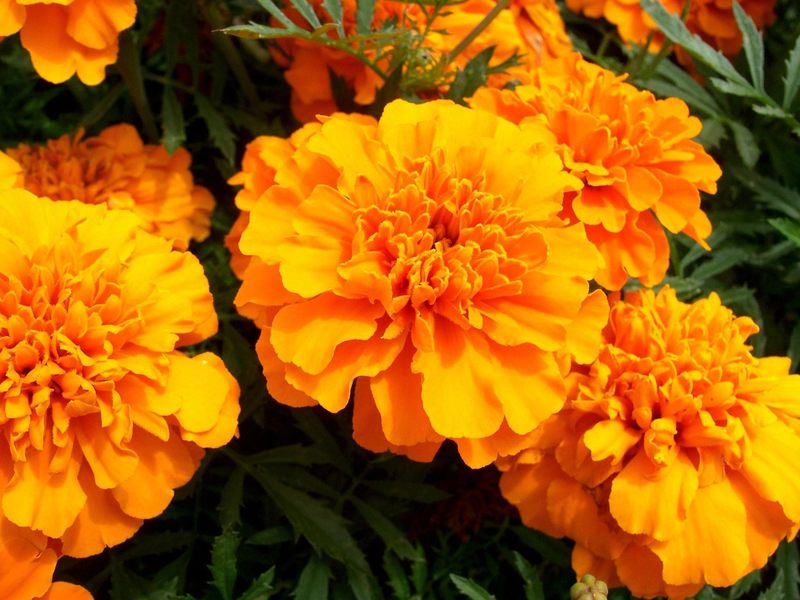
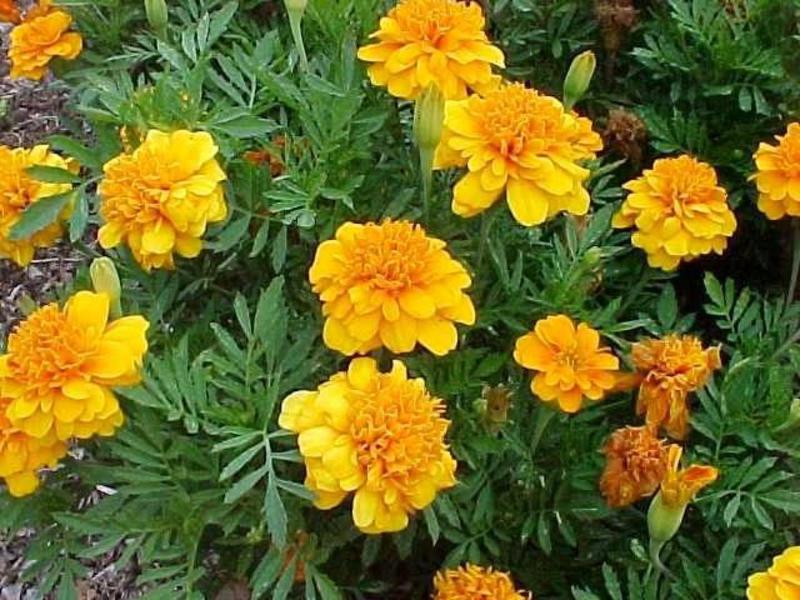

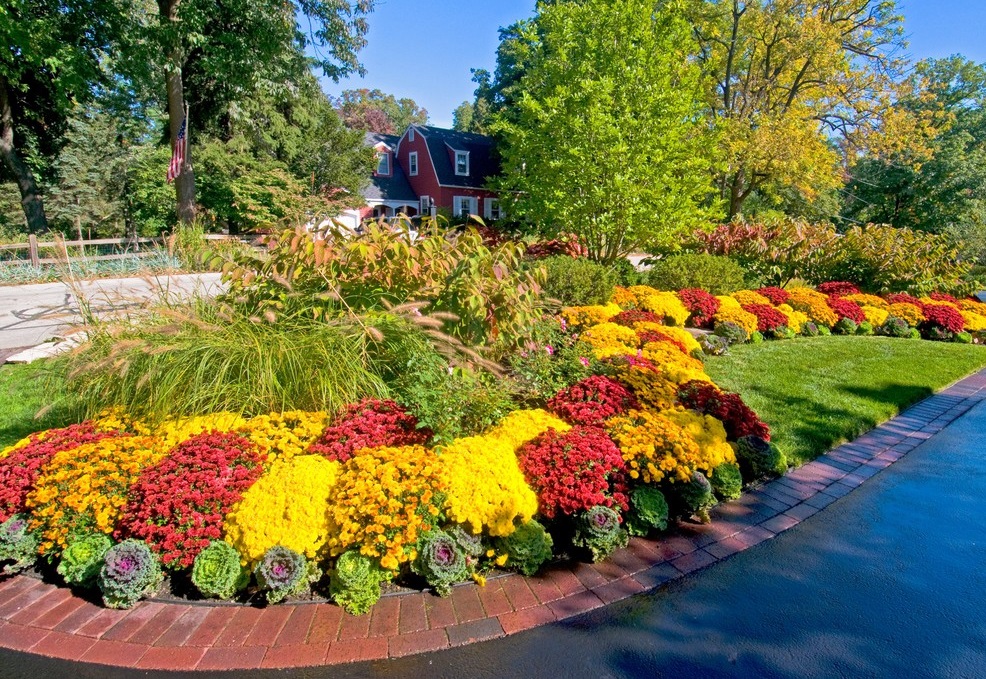

1 comment